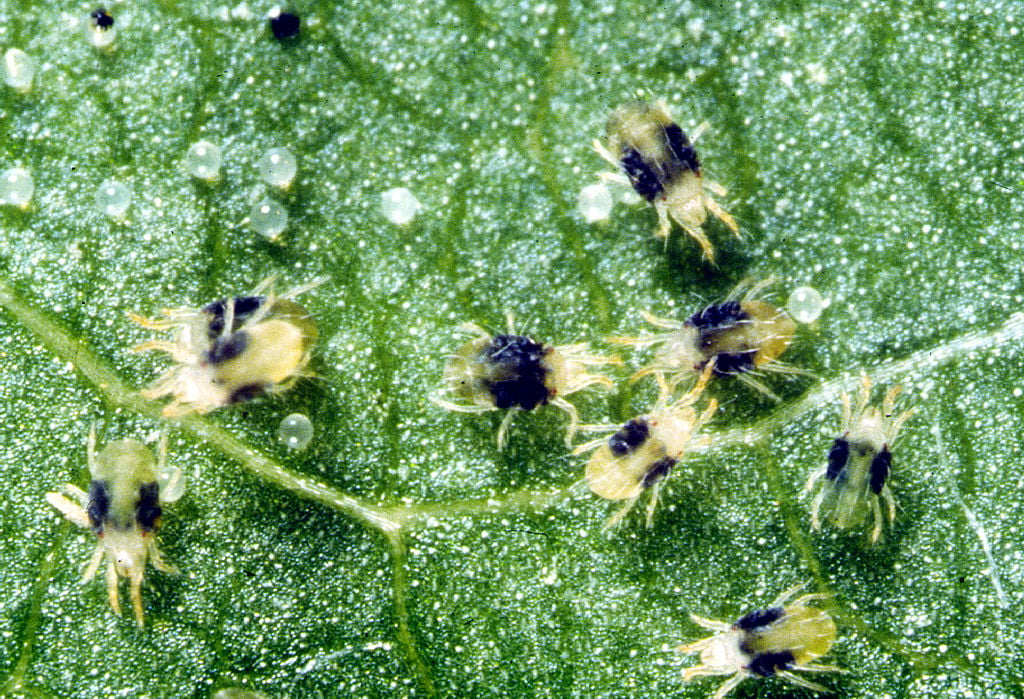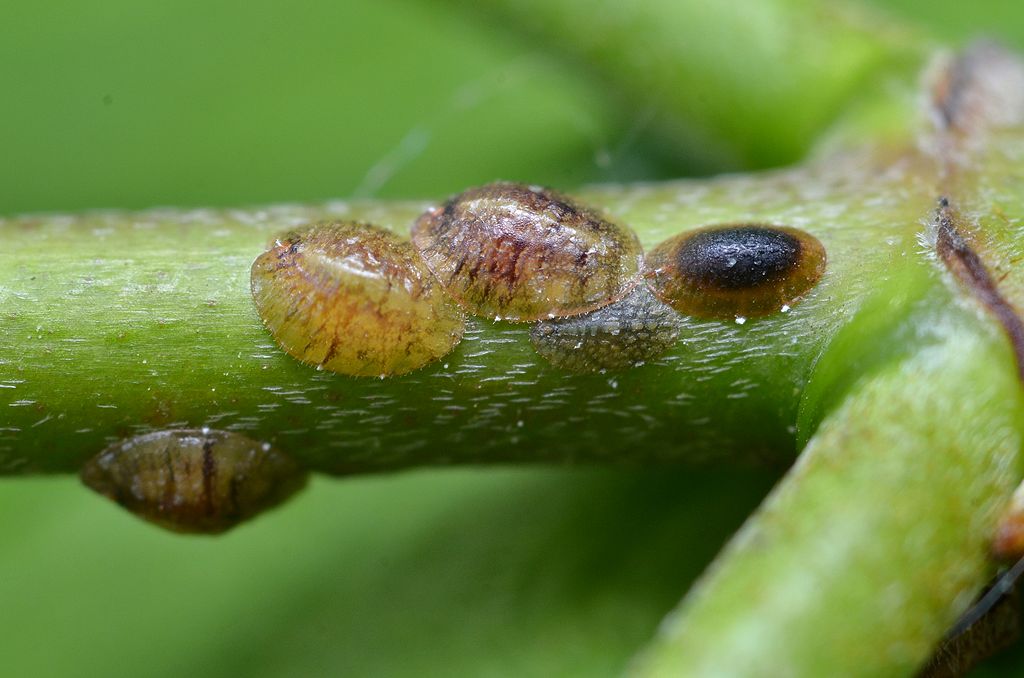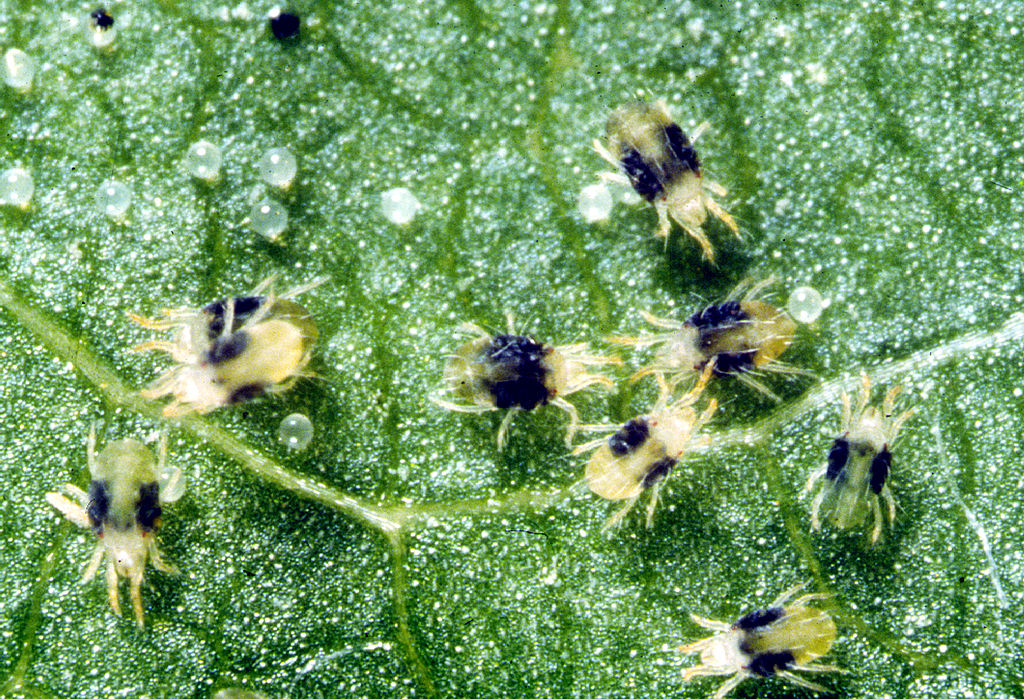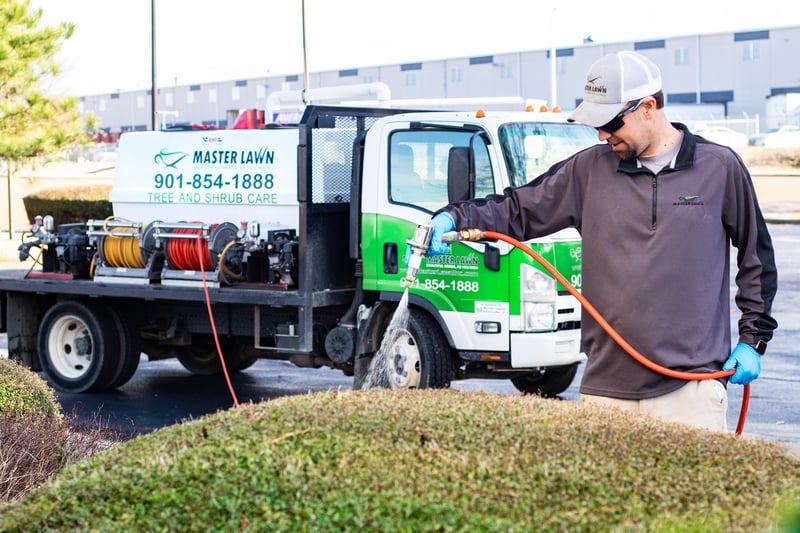
Tiny but mighty—that’s how we’d describe some of the tiny bugs on trees and shrubs that you’re likely to find in your Memphis, TN or Northern MS landscaping.
Based on their size alone, they may seem harmless. But they have the power to do some real damage. If you’ve noticed tiny bugs on any of your plants, you might be confused or worried. Can such a minuscule creature actually do much harm?
Unfortunately, the answer is yes.
There are two tiny bugs, in particular, that could indicate big problems—mites and scale. In this article, we’ll cover each of them and what you need to know.
While mites and scales are not the only two “tiny bugs” found on trees and shrubs, they are the two that we are focusing on for the purpose of this article because they are most common and because they can also pose a serious problem if not addressed properly. Let’s take a closer look at each.
Scale insects are sap-feeding pests that get their name from the hard shell that conceals their bodies. Depending on the species of scale, you may find them on tree branches, stems, foliage, or fruit.

Scale feed using their sucking mouthparts to drain your plants of nutrients, which can cause significant damage including twig dieback, stunted development, and premature leaf drop. In our area, we often find scale on hollies, crape myrtles, and other common shrubs and small ornamental trees.
There are many types of mites. Some actually beneficial to plants because they feed on harmful mites. For the purposes of this article, we’re focusing on spider mites which are the most notorious and can be incredibly destructive to plants.

Spider mites have eight legs and resemble a spider, though they are incredibly tiny. At only 1/64 inch long, you may never even see them. There are many plants on which you might find spider mites including Boxwood, Arborvitae, Burning Bush, and Spruce to name just some.
Spider mites use their piercing mouthparts to feed on the chlorophyll in plants, which can lead to white spots or a stippled appearance. As these pests continue to feed, the damaged foliage will eventually turn brown and fall off.
With any pest problem, the proper approach means everything when it comes to success. In both of these cases (as with any pest), the treatment approach could vary depending on the severity of your problem. In some cases, if pests have already run rampant and severely damaged your bushes or trees, it could be beyond fixing. But oftentimes, there are solutions.
Getting rid of scale usually takes a multi-pronged approach with applications of appropriately timed insecticides. The exact product utilized may differ depending on the type of scale that you have. Scale found on Crepe Myrtle trees, for instance, does require a specialized treatment that is not part of our regular Plant Health Care program.
Similarly, spider mite control also requires a specialized approach. As we mentioned, there are some mites that are actually beneficial to the landscape because they eat the harmful ones. For this reason, it is important that selective miticide products are utilized that won’t kill the beneficial, predatory mites.
The biggest problem with tiny pests is that they are rarely spotted by homeowners until the problem is severe. You might not have realized that your plants were slowly becoming dull, right under your nose. They’re sneaky like that!
That’s why the best thing that you can do for your trees and shrubs is to invest in preventative care. A Plant Health Care program can help you prevent harm from pests in the first place.

Of course, we recognize that you might be reading this article because you’ve already spotted a problem. Fortunately, there are usually curative treatments, such as the ones that we described above, that can work. Going forward, you can use the Plant Health Care program to prevent future problems.
Plant Health Care provides trees and shrubs with the vital nutrients that they need to perform their best while also setting them up to better protect themselves against pests like spider mites and scale. The treatments combine fertilization, pest control, and disease control to help protect your plants from all of these problems.
Your trees and shrubs are a valuable part of your property and you deserve to be able to feel confident they’re protected. You don’t have to let tiny bugs cause you big problems at your Memphis, TN or Northern Mississippi home. You can take action and claim victory over these destructive pests.
Ready to invest in protecting your trees and shrubs from pests? Request a quote, get your customized plan, and become the master of your landscape.
Image sources: scale, spider mites
Michael Hatcher is Founder / Chairman of Michael Hatcher & Associates.
These Stories on Insects & Pests
8255 Center Hill Rd
Olive Branch, MS 38654
8164 MS-178
Olive Branch, MS 38654
Phone: (901) 445-9336
Fax: (901) 853-7353
Copyright © Master Lawn | All Rights Reserved.